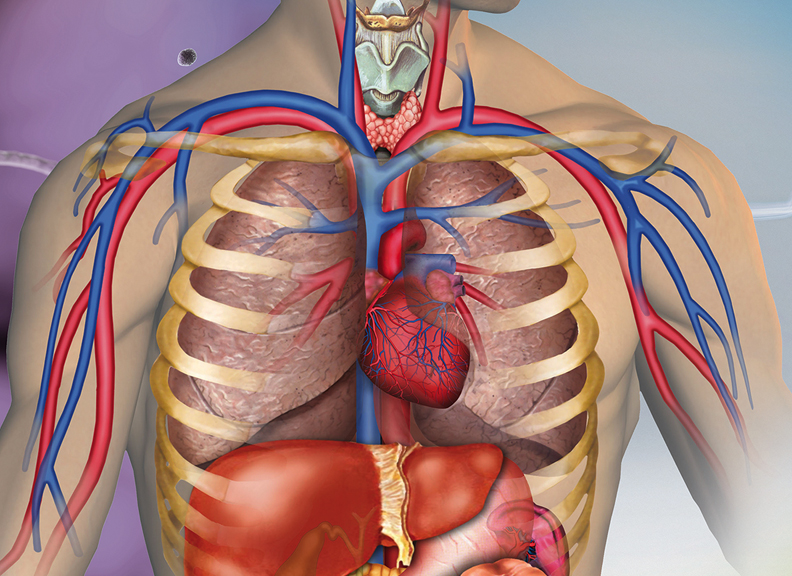PROJECT
Filling the risk factor gap: How does exercise exert its cardiovascular benefits?
Explore the beneficial effects of exercise on vascular function and health
Exercise training has strong and independent cardioprotective effects which are, in part, mediated through a direct effect of exercise training on the vasculature (Green 2009; Green et al. 2008).
More specifically, our team has identified a biphasic adaptive response in large conduit arteries following exercise training in humans, with functional changes preceding structural remodelling (Tinken et al. 2008). These beneficial adaptations appear to be dependent on changes in lumenal blood flow and intimal shear stress (Thijssen et al. 2011; Tinken et al. 2010).
These studies, amongst others, involve the use of high-resolution Doppler ultrasound to directly quantify arterial shear stress as well as changes in function, size and wall thickness of arteries in vivo.
In addition, studies investigating smaller skin blood vessels reveal exercise training (Black et al. 2008) and whole body heating (Carter et al. 2014) enhance microvascular vasodilator function, results which appear to be dependent on repetitive increases in blood flow.
These collective studies highlight the role of blood flow and shear stress as an adaptive stimulus to the whole arterial tree.
As such, acute studies focusing on the role of shear stress, dependent and independent of exercise (Carter et al. 2013; Dawson et al. 2013; Tinken et al. 2009), have sought to determine how such a stimulus can modulate vascular behaviour and how differential shear patterns can alter the direction of the acute vascular change i.e. exposure to retrograde shear rate can negatively affect vascular function (Green et al. 2002; Thijssen et al. 2009).
We aim to further this research on the importance of shear stress, including but not limited to:
- isolating the effect of different shear patterns when accompanied by other systemic stimuli (transmural pressure, sympathetic stimulation)
- shear profiles: shear rate patterns and the role of antegrade versus retrograde flow on function
- shear patterns during exercise in different regional vascular beds
- microvascular adaptations to exercise and heating: role of blood flow
Read more about our exercise research or our cardiovascular research group.
For more background information, see the suggested readings below.
- Suggested readings
-
- Black MA, Green DJ, Cable NT. (2008) Exercise prevents age-related decline in nitric-oxide-mediated vasodilator function in cutaneous microvessels. Med Sci Sports Exerc 40:S91-S91.
- Carter HH et al. (2013) Effect of SR manipulation on conduit artery dilation in humans. Hypertension 61:143-150.
- Carter HH et al. (2014) Distinct Impacts of Blood Flow and Temperature on Cutaneous Microvascular Adaptation Medicine & Science in Sports & Exercise. Published Ahead of Print.
- Dawson EA, Green DJ, Cable NT, Thijssen DH. (2013) Effects of acute exercise on flow mediated dilatation (FMD) in healthy humans. J Appl Physiol 115:1589-1598.
- Green DJ. (2009) Exercise training as vascular medicine: direct impacts on the vasculature in humans. Exerc Sport Sci Rev 37:196-202.
- Green DJ, Cheetham C, Reed C, Dembo L, O'Driscoll G. (2002) Assessment of brachial artery blood flow across the cardiac cycle: retrograde flows during cycle ergometry. J Appl Physiol 93:361-368.
- Green DJ, O'Driscoll G, Joyner MJ, Cable NT. (2008) Exercise and cardiovascular risk reduction: Time to update the rationale for exercise? J Appl Physiol 105:766-768.
- Thijssen DH et al. (2011) Exercise-mediated changes in conduit artery wall thickness in humans: role of shear stress. Am J Physiol 301:H241-H246.
- Thijssen DHJ, Dawson EA, Tinken TM, Cable NT, Green DJ. (2009) Retrograde flow and shear rate acutely impair endothelial function in humans. Hypertension 53:986 - 992.
- Tinken TM, Thijssen DH, Black MA, Cable NT, Green DJ (2008) Time course of change in vasodilator function and capacity in response to exercise training in humans. The Journal of physiology 586:5003-5012.
- Tinken TM et al. (2009) Impact of shear rate modulation on vascular function in humans. Hypertension 54:278-285.
- Tinken TM, Thijssen DHJ, Hopkins ND, Dawson EA, Cable NT, Green DJ. (2010) Shear stress mediates vascular adaptations to exercise training in humans. Hypertension 55:312-318.
Research team leader: Professor Daniel John Green
I am a human integrative biologist whose research focuses on the prevention of cardiovascular diseases. My specific expertise relates to novel imaging approaches to the assessment of micro and macrovascular diseases, including surrogate measures of early and occult disease.
How to apply
Interested in becoming part of this project? Complete the following steps to submit your expression of interest:
Step 1 - Check criteria
General UWA PhD entrance requirements can be found on the Future Students website.
Requirements specific to this project:
- Knowledge of cardiovascular physiology, techniques and exercise training
Step 2 - Submit enquiry to research team leader
Step 3 - Lodge application
After you have discussed your project with the research team leader, you should be in a position to proceed to the next step of the UWA application process: Lodge an application. Different application procedures apply to domestic and international students.
Scholarships
- Scholarships specific to this project
-
Top-up scholarships may be available for this project. Contact the research team for details.
- Domestic students
-
All domestic students may apply for Research Training Program and University Postgraduate Awards (UPA) scholarships
- International students
-
A range of scholarships are available from international organisations and governments. The full list, organised by country, is available on the Future Students website.
In addition, all international students may apply for International Research Training Program scholarships.
- Indigenous students
- Indigenous students are encouraged to apply for Indigenous Postgraduate Research Supplementary Scholarships.
- Prestigious postgraduate research scholarships
-
Prestigious postgraduate research scholarships support graduate research training by enabling students of exceptional research promise to undertake higher degrees by research at the University.











